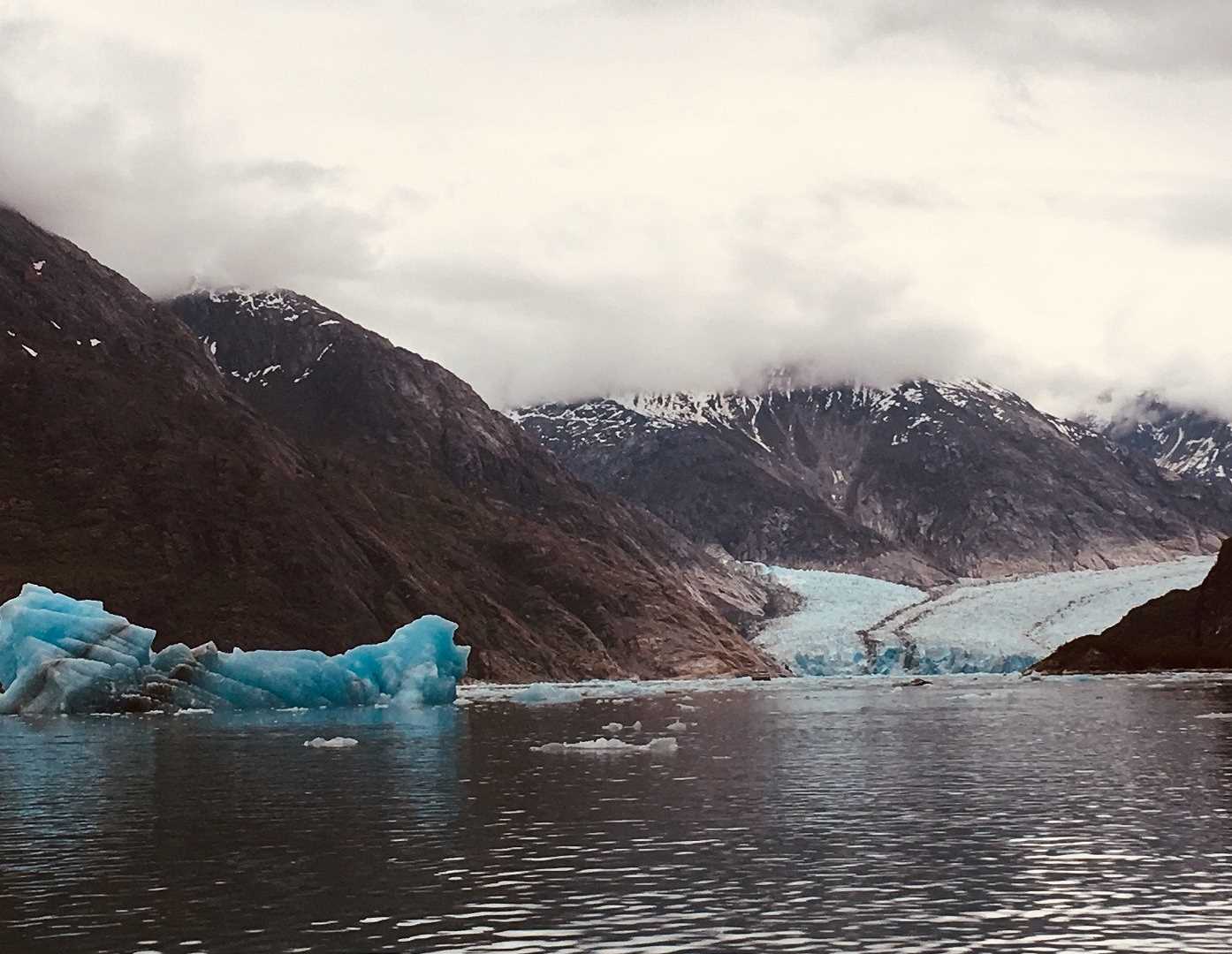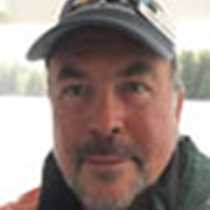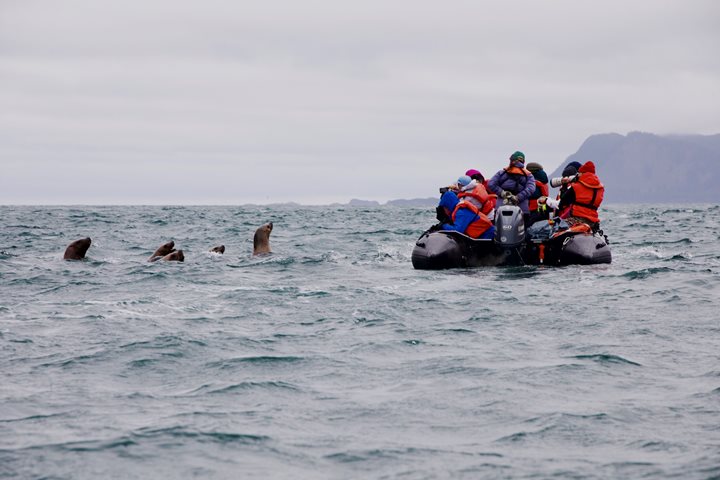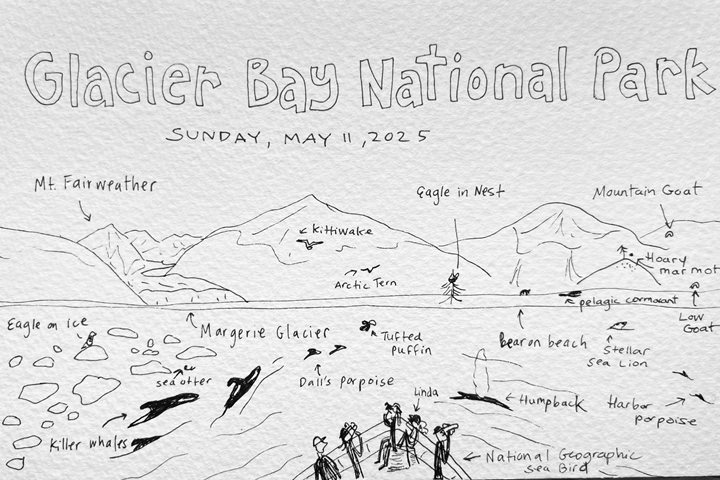Expedition vessels exploring the Inside Passage must navigate Stephens Passage in order to reach the mouth of Tracy and Endicott Fjords. National Geographic Sea Lion arrived at the entrance of Holkham bay that lead into Endicott Arm in the early morning hours. Our guests and expedition staff enjoyed a tasty breakfast, and the room’s excitement of a pending water-level tour of the surrounding ice was very much palpable.
This region of southeast Alaska is replete with natural wonders. We transited 25 nautical miles to Dawes Glacier, one responsible for carving this stunning fjord. Looking from the bow of our ship, shimmering icefields grace the mainland mountains. Port-side, guests sight a group of colorful harlequin ducks playing ahead of a small stream, which we pause to observe. A few yards up shoreline, a plump black bear busied itself over a small feast of breakfast grass. In water a few yards off from these spectacles, a curious harbor seal putters along the rocky beach. The morning air is chilled, crisp, and it is not long before we begin to see bergy bits in the inlet.
John Muir explored Endicott Arm on one of his expeditions in 1880. Muir’s native guides were concerned their canoes would be crushed in the traffic of brash ice and bergy bits flowing out from the glacier’s calving. Dawes Glacier, a tide water glacier, and many others are fed by the massive Stikine Icefield.
Departing by specialized watercraft, we take in the beauty of the fjord walls. Clinging to the schist and granite are moss, scrub, and Sitka trees. The cliff walls rise skyward, in excesses of more than 2,000 feet, with hanging waterfalls plunging down the steep polished sides into the green and uncharacteristically milky seascape below. Magnificent bergy bits and small deep blue icebergs fill the fjord. This is an indication of both how active this glacier’s calving is and how rapidly it is retreating in total.
Tours of the brash ice and the glacier face concluded and guests now back aboard, the ship slowly made her way back into Stephens Passage. In the afternoon we sail north toward Lynn Canal, a major throughway of the Inside Passage. We have many nautical miles to cover yet for reaching our next destination of Glacier Bay.
As we neared the cocktail hour, a pod of killer whales encircled National Geographic Sea Bird, and we soon had a full-on frenzy of whale activity to witness, as a couple foraging humpback whales munching on herring joined in. We enjoyed more than two hours of these amazing marine mammals surrounding the vessel. We finally left these animals to enjoy a tasty dinner ourselves. The wonders and astonishing power of ice, pressure, and time were clearly shown today, and in ways we are not soon to forget. The nutrient-rich waters of southeast Alaska lent a show of cetaceans to bookend a splendid day.









